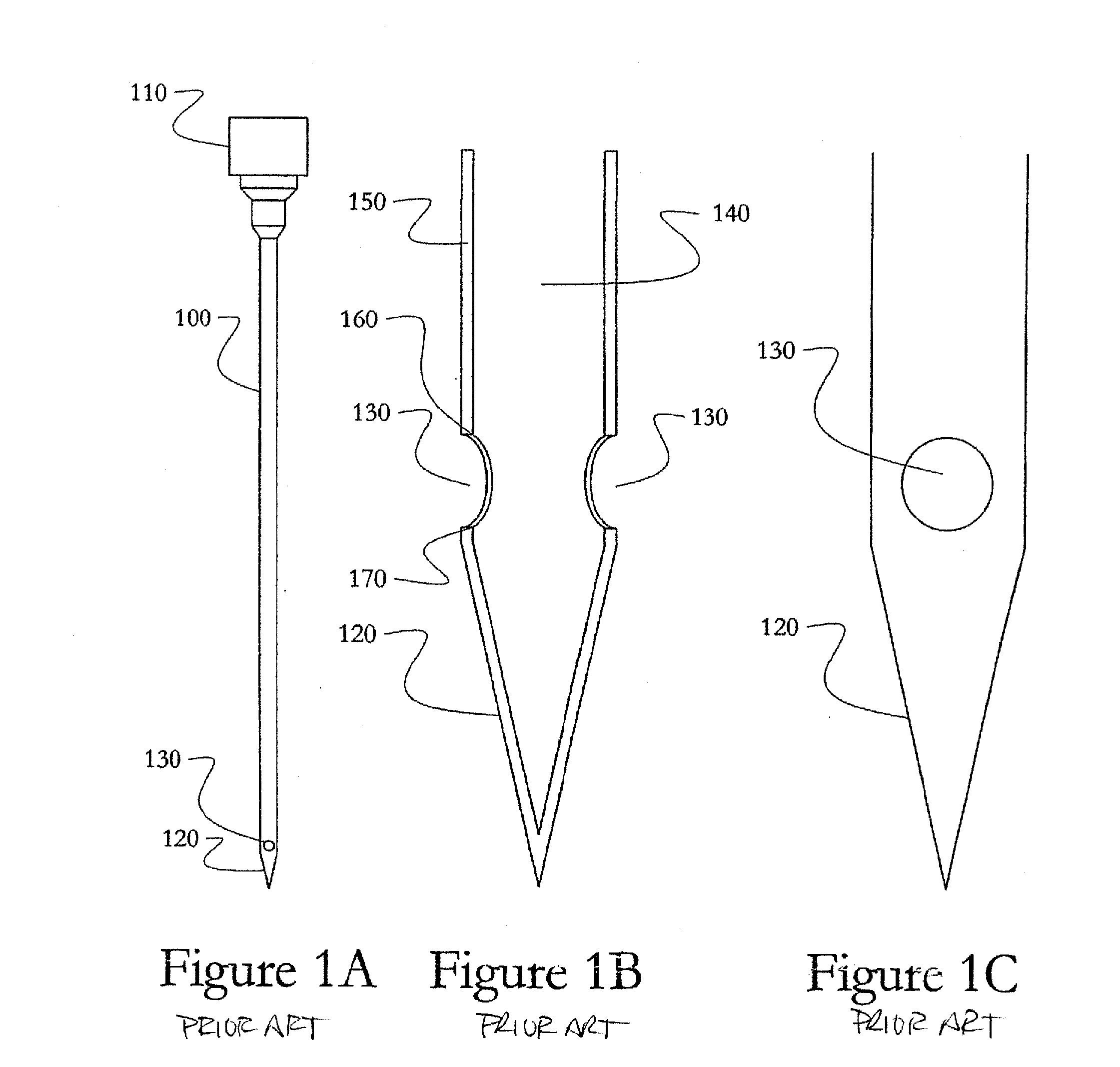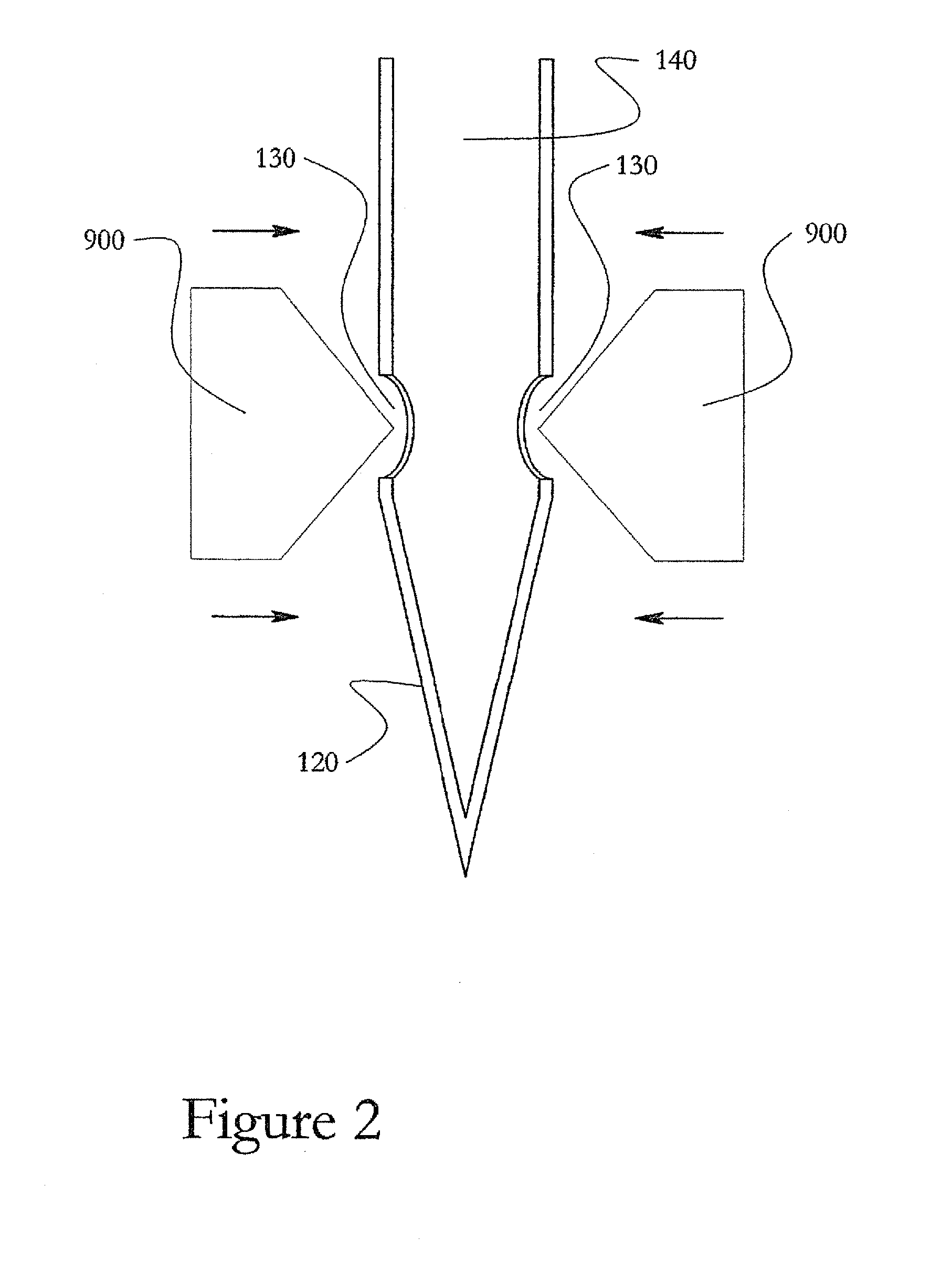Non-coring reduced shearing needle
a shearing needle and non-coring technology, applied in the field of needle designs, can solve the problems of material against material can fall into the side hole or can be planed, and increase the risk, so as to increase the outer diameter of the needle, increase the compression of the traversed material, and the effect of the greatest resistance to flow
- Summary
- Abstract
- Description
- Claims
- Application Information
AI Technical Summary
Benefits of technology
Problems solved by technology
Method used
Image
Examples
Embodiment Construction
[0026]Often, the smallest flow area in standard needle cannulae is defined by the inner diameter of the needle. However, in the case of a closed tip needles employing a side hole, the side hole itself generally defines the minimum flow area. This is because as the area of the side hole increases, there is an increasing risk that material can fall into the side hole and be planed, sheared, cut or cored by the edges of the side hole as the needle progresses through the material. This is particularly true if the material being traversed is under compression or constrained against expansion.
[0027]One or more aspects of the present invention relates to methods and devices to maximize flow rate through non-coring needles while minimizing the risk of cleaving, cutting or shearing the material being traversed. More specifically, one or more aspects of the present invention relate to methods of modifying the geometry of the edges of side holes in a non-coring needle to maximize flow area whi...
PUM
 Login to View More
Login to View More Abstract
Description
Claims
Application Information
 Login to View More
Login to View More - R&D
- Intellectual Property
- Life Sciences
- Materials
- Tech Scout
- Unparalleled Data Quality
- Higher Quality Content
- 60% Fewer Hallucinations
Browse by: Latest US Patents, China's latest patents, Technical Efficacy Thesaurus, Application Domain, Technology Topic, Popular Technical Reports.
© 2025 PatSnap. All rights reserved.Legal|Privacy policy|Modern Slavery Act Transparency Statement|Sitemap|About US| Contact US: help@patsnap.com



